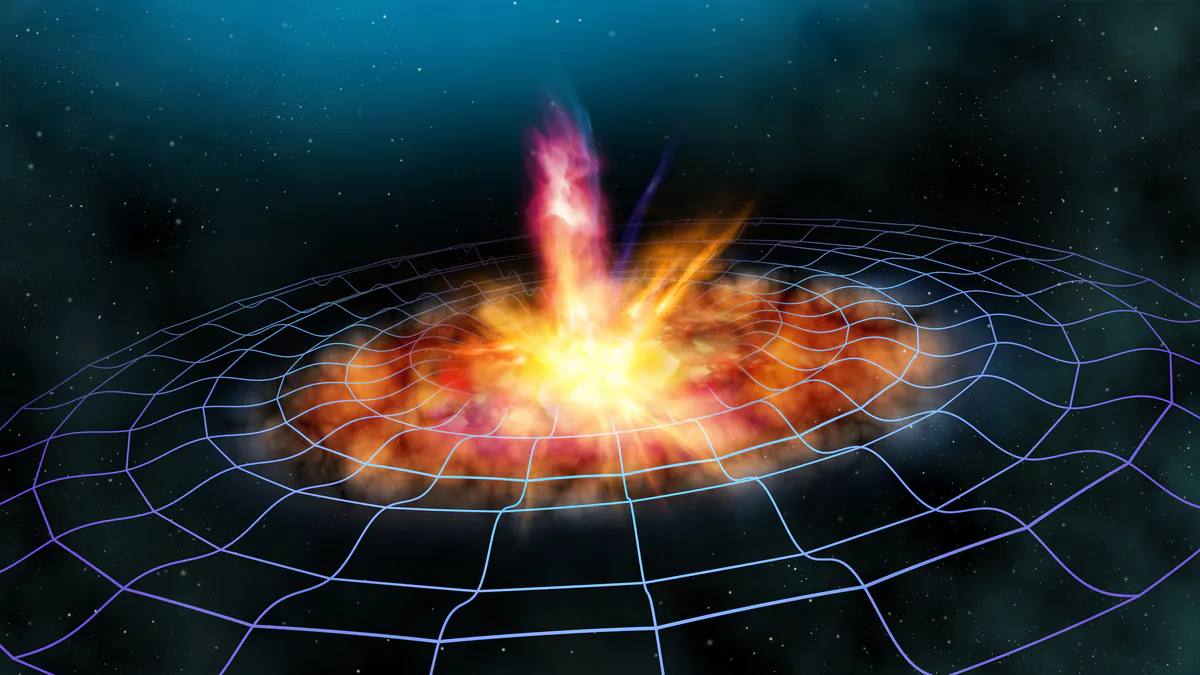
Operating observatories around the world are targeting areas of low galactic pollution in search of the imprints of cosmological gravitational waves (CGW) born of inflation, a mysterious phase of quasi-exponential space expansion in the early universe. A new study by the SISSA-led POLARBEAR collaboration provides a new correction algorithm that allows researchers to nearly double the amount of reliable data obtained at such observatories, thus opening access to an unknown area of the CGV signal before the Big Bang.
“According to the current understanding in Cosmology, just after the Big Bang, the Universe was very small, dense, and hot. In 10-35 seconds, it stretched by a factor of 1030,” Carlo Baccigalupi, coordinator of the Astrophysics & Cosmology group at SISSA, explains. “This process, known as Inflation, produced Cosmological Gravitational Waves (CGW) that can be detected through the polarization of the Cosmic Microwave Background (CMB), the leftover radiation from the Big Bang. The POLARBEAR experiment, which SISSA is part of, looks for such signals using the Huan Tran Telescope in the Atacama Desert of northern Chile in the Antofagasta Region.”
Analysis of data obtained by the POLARBEAR Observatory is a complex process in which the reliability of measurements is a key factor.
For the past two years, Anto. I. Lonappan, a Ph.D. student at SISSA, and Satoru Takakura from the University of Boulder, in Colorado, have characterized the quality of the extended POLARBEAR collaboration dataset, tracking all known instrumental and physical uncertainties and taxonomies. “We have implemented an algorithm that assigns accuracy to the measurements in the ‘Large Patch’, a region extending for about 670 squared degrees in the Southern Celestial Hemisphere, where our sounder reveals data in agreement with other probes looking in the same location, such as the BICEP2/Keck Array located in the South Pole,” they explain.
Large developments are approaching from an experimental point of view. A system of three modernized POLARBEAR telescopes, known as the Simons array, is being prepared. The Simons Observatory, a new system of telescopes with small and large apertures, will start operating nearby, in the Atacama, in 2023. Later this decade, the LiteBIRD satellite will fly, and an expanded network of terrestrial observatories located in the Atacama Desert and the South Pole, known as Stage IV, will complement these observations.
“All these efforts will lead to the ultimate measurement of CGWs, revealing at the same time most important clues about the Dark Energy and Matter cosmological components,” Baccigalupi concludes. “Through the main mission of SISSA as a Ph.D. school, training students to become young researchers, our Institute is and will be contributing significantly to the main contemporary challenges for Physics, as the present one, targeting Gravitational Waves from a tiny fraction of a second after the Big Bang.”
You can also help Ukraine fight with Russian occupants via Savelife or via an official page of the National Bank of Ukraine.
Read also:
Leave a Reply